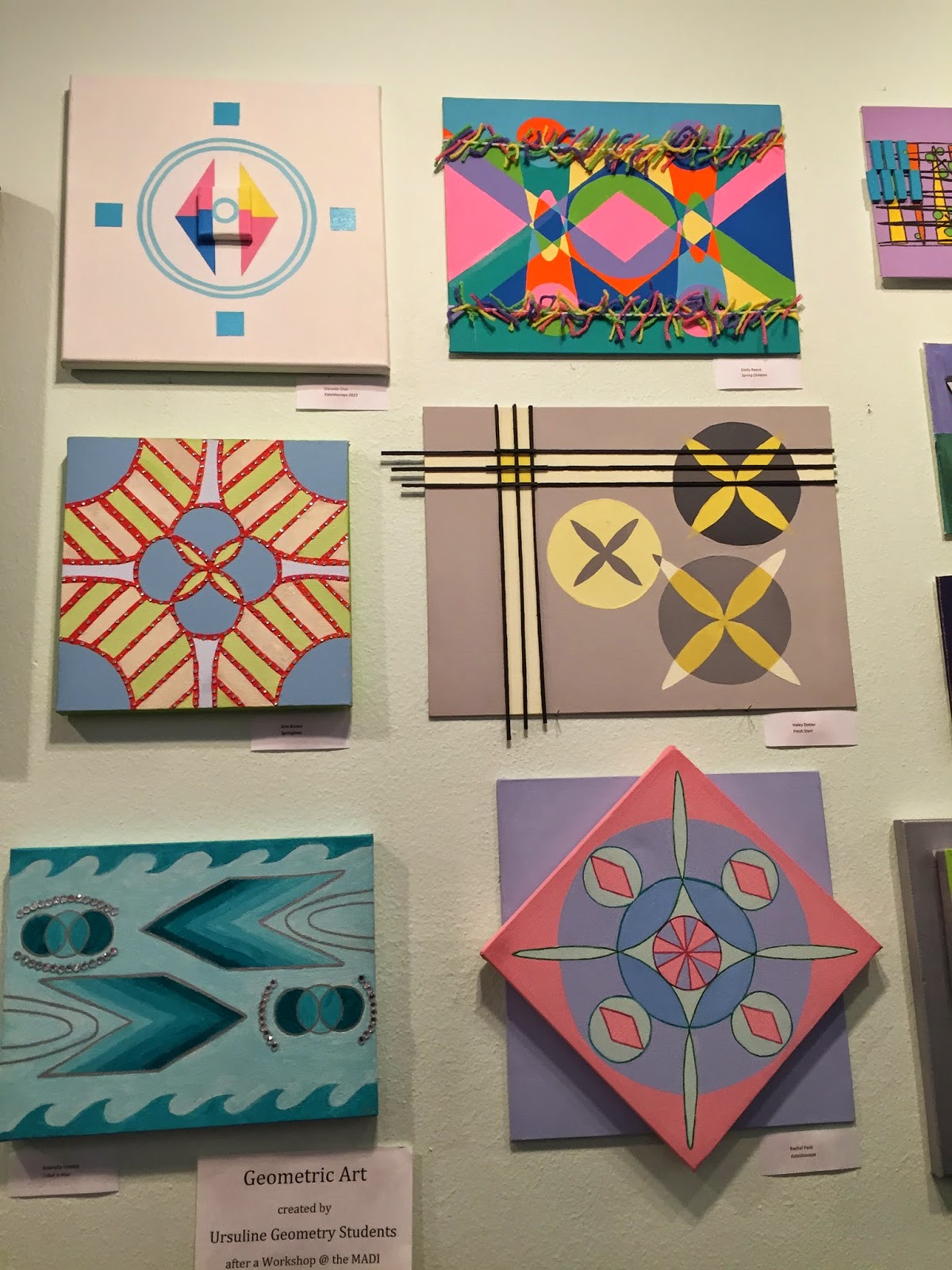By Anne Marie Burdick
 As I walked around the Museum of Geometric and MADI Art of
Dallas it was more than evident that geometry can be found in artwork. Even if
a first time visitor of the museum did not know what MADI art was, they could
make a good guess based on the museum’s name. MADI Art is the study of
movement, abstraction, dimension, and invention. MADI art consists of colorful
shapes that are three-dimensional and two-dimensional. For example, the photo to the left is a colorful three-dimensional piece of artwork made out of wood. The artwork in this
museum comes from around the world and consists of sculptures, wooden canvases,
paintings, and quilts. Geometry does not need to be left in the school
classroom; places like the Museum of Geometric and MADI Art confirm geometry
can be found in a variety of locations and provide teachers with different ways
to integrate art into their geometry curriculum.
As I walked around the Museum of Geometric and MADI Art of
Dallas it was more than evident that geometry can be found in artwork. Even if
a first time visitor of the museum did not know what MADI art was, they could
make a good guess based on the museum’s name. MADI Art is the study of
movement, abstraction, dimension, and invention. MADI art consists of colorful
shapes that are three-dimensional and two-dimensional. For example, the photo to the left is a colorful three-dimensional piece of artwork made out of wood. The artwork in this
museum comes from around the world and consists of sculptures, wooden canvases,
paintings, and quilts. Geometry does not need to be left in the school
classroom; places like the Museum of Geometric and MADI Art confirm geometry
can be found in a variety of locations and provide teachers with different ways
to integrate art into their geometry curriculum.
Based on my own research prior to my visit to the museum, I
found out that geometry and art were key components of many civilizations. For
example, in Southern Africa women used to create quilts, murals, and pottery
with geometric designs on them. These pieces of artwork demonstrated symmetry,
tessellations, and transformations, all of which are geometry-based concepts. A
literary resource for students is the book
Women, Art and Geometry in Southern
Africa by Paulus Gerdes. This book is a great resource for students to see
a historical point of view and how math and geometry are used outside of
school.
An activity that teachers could have their students complete
in the classroom is It’s Friezing in
Here: Tessellations through Art, Architecture, and Cultural Artifacts by,
Lynda Colgan. This
activity has students create their own four-cell tile. Students are given
the opportunity to practice translation, reflection, glide reflection, and
tessellations. This activity also allows students to learn why certain culture’s
artwork uses particular shapes and designs based on their beliefs.
 A second and more interactive activity that the teacher could
complete is to have his or her class take a field trip to the
Museum of Geometric and MADI Art. At this museum they offer workshops for
students. Each workshop is designed and based off of age appropriate curriculum
and instruction. Students would be able to create their own pieces of artwork
using shapes, color, and space. Not only would students have the opportunity to
create their own pieces of artwork, but they will also have the opportunity to
tour the museum. This field trip could spark a new interest for a student and
could inspire his or her future career.
A second and more interactive activity that the teacher could
complete is to have his or her class take a field trip to the
Museum of Geometric and MADI Art. At this museum they offer workshops for
students. Each workshop is designed and based off of age appropriate curriculum
and instruction. Students would be able to create their own pieces of artwork
using shapes, color, and space. Not only would students have the opportunity to
create their own pieces of artwork, but they will also have the opportunity to
tour the museum. This field trip could spark a new interest for a student and
could inspire his or her future career.
By integrating art and geometry, students will
get the opportunity to see the importance of a core subject. When teachers link
math with other subjects they are allowing students to find areas of math they
can relate to. The Museum of Geometric and MADI Art proves that geometry is
used outside of the classroom. By giving students these resources, we are
setting them up to be the next enthusiasts of mathematics, and more specifically
geometry.












